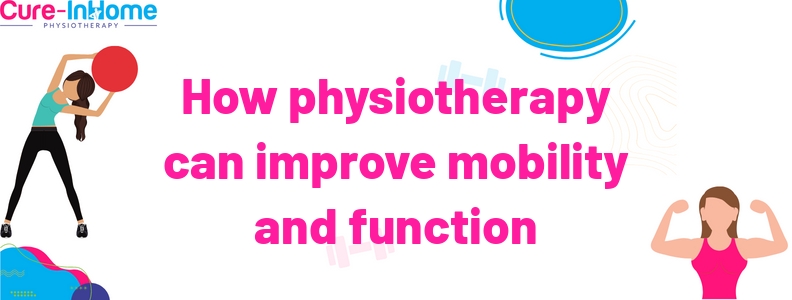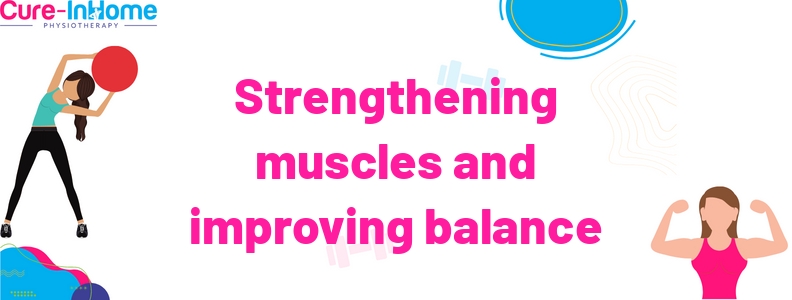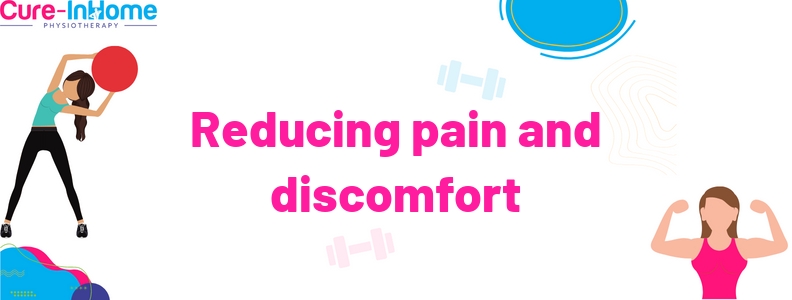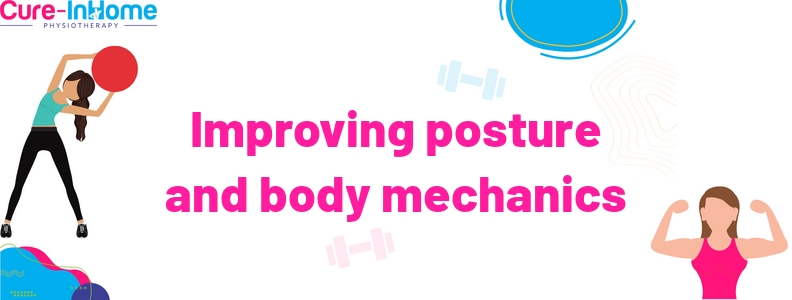
How Physiotherapy Can Improve Mobility And Function
How Physiotherapy Can Improve Mobility And Function
Physiotherapy is a beneficial treatment for those experiencing issues with movement, pain and function as a result of injury, illness or any other issue. It can help to improve mobilityand function by increasing flexibility, strength and endurance. This makes it easier to carry out everyday tasks like walking, bending and lifting items.
Physiotherapy lends a hand to improve the body’s range of motion by stretching muscles, tendons and ligaments in order to reduce stiffness and tension. Strengthening exercises promote muscular stability which usually may help prevent further injury along with increase joint stability. As built up of scar tissue increases it can limit one’s mobility; physiotherapy helps break down this tissue so that movement isn’t impaired in the impinge oned area.
Lastly massage techniques used in physiotherapy can assist by ensuring that oxygenated blood flow is increased throughtout the duration of the body which helps promote healing and reduces pain. By breaking down adhesions between muscle fibres it can help reduce pain levels along with lengthen muscles improving flexibility for improved movement.
Overall, physiotherapy is a optimal way to help improve mobility and function. By combining different treatments like stretching, fortifying exercises and massage techniques it naturally be able to assist individuals gain back their full range of motion while also promoting healing within the body at the same time.

Improving Range Of Motion And Flexibility
Physiotherapy is an practical way to improve range of motion (ROM) and flexibility. It does this by loosening tight muscles and fascia, fortifying weak muscles, realigning imappropriate movement patterns, and improving coordination. All of these activities can help improve mobility and reduce pain.
Range of motion exercises focus on stretching the body’s joints and muscles in order to increase their range of motion. These types of exercises are often tailored to a patient’s specific needs and might include gentle stretching, mobilization techniques, or proprioceptive neuromuscular facilitation. This lends a hand to improve both passive and active ROM along with flexibility.
In addition to range of motion exercises, physiotherapists may also use various manual therapies like joint mobilizations, muscle energy techniques, soft tissue massage, massage cup therapy, or a variety of other hands-on treatments to help restore mobility and reduce pain.
Finally, physiotherapists will frequently recommend home-based exercise programs designed specifically for that individual patient in order to optimize their recovery phase post physiotherapy treatment session. These types of exercises are designed to further stretch joints and muscles with specific goals in mind in order to improve overall range of motion and flexibility.
As you can see, physiotherapy can practically improve range of motion and flexibility when used correctly – so if you’re searching for a way to increase your mobility level and reduce pain contact your local physiotherapist today!

Strengthening Muscles And Improving Balance
Physiotherapy is a critical component of improving mobility and function. Physical therapy toughens muscles which are used in everyday activities. Potentiation of muscle strength has a direct effect on balance as well, thus improving overall functional performance.
The fortifying process begins with the use of weights, bands and other resistance equipment to gradually increase the amount of tension being applied to the muscle system. This helps build stronger muscles, improve posture and reduce compensatory patterns that can restrict movement. Moreover, it keeps your joints healthy by increasing range of motion and decreasing stiffness as a result of immobility.
Alas, physiotherapists focus on stabilizing the core muscles surrounding your trunk and spine to help improve balance as well. Through exercises that involve postural control and proprioception – awareness of body position – you will be more in tune with how your body moves in space and less likely to fall or lose balance quite easily. This improved awareness can also help prevent injuries from unforeseen accidents or falls as a result of decreased agility when moving quickly or abruptly.
Overall, physiotherapy plays a key role in improving mobility and function by fortifying muscles while simultaneously improving balance. The combination of these two elements helps ensure we can move through our lives with greater ease and stability, promoting both physical health and mental wellbeing through enhanced quality of life.

Reducing Pain And Discomfort
Physiotherapy is a powerful tool for reducing pain and discomfort. It lends a hand to reduce physical limitations and improve mobility, by providing a range of treatments with the goal of restoring practical movement. Physiotherapists are highly experienced at targeting structural or functional problems that may cause pain or discomfort. These types of may include muscle tension, joint stiffness, postural misalignments, poor posture and lack of exercise.
When you’re looking at reducing pain and discomfort, physiotherapy uses techniques including massage, stretching and exercise to release muscular tension, loosen stiff joints, restore alignment and build strength. Massage therapy can improve circulation to reduce muscle pain while stretching lends a hand to increase flexibility and range of motion. Exercise programs provide progressive loading of muscles and joints over time to promote healing while improving overall strength and endurance.
In addition to targeted treatment plans, physiotherapists also offer advice on how recommend you manage medical conditions at home through self-care strategies like heat or cold therapy application; ergonomic positioning; taking prescribed medications; gentle exercises for mobility, balance and coordination; relaxation techniques; pacing activities for symptom management; breathing training; personalized lifestyle recommendations; nutrition guidance and support for psychological issues. When correctly practiced in conjunction with appropriate treatment from your physiotherapist, all these strategies combine to produce an overall improvement in physical wellbeing.

Improving Posture And Body Mechanics
with physiotherapy
Physiotherapy is a powerful tool for improving posture and body mechanics. It is used to help identify and treat the underlying causes of poor posture, like muscular imbalances, joint restrictions, or soft tissue dysfunctions. Physiotherapists use techniques like stretching, fortifying, manual therapy, and education to improve how the body moves and functions.
To improve posture and body mechanics with physiotherapy, an assessment will be conducted to determine any musculoskeletal or other deficits that may be impacting a person’s ability to move correctly. All the way from there, an individualized treatment plan can definitely be created to deal with the identified areas of need. This may involve stretches and exercises to toughen weak muscles or loosen tight muscles; manual manipulation techniques like massage or manipulation of joints; or postural education on appropriate alignment and how to sit, stand and bend correctly.
Improved posture and better body mechanics can reduce pain from overuse syndromes like tendonitis, bursitis, plantar fasciitis, carpal tunnel syndrome and many other conditions that cause discomfort in the neck, back and extremities. Ultimately it can improve function by allowing more efficient movement patterns so that everyday life becomes easier with less effort required for physical activities.

Increasing Overall Physical Endurance And Stamina
Physiotherapy can help to improve physical endurance and stamina, by aiming to toughen the body’s muscles and joints. Increasing overall physical endurance and stamina involves developing a regular exercise routine that focuses on the cardiovascular system. Through exercise like running, swimming and cycling, the body’s aerobic capacity improves, allowing for greater amounts of oxygen to be delivered to the cells, subsequently increasing the amount of energy available for movement.
Also important is fortifying specific muscle groups associated with both movement and support in order to maximize physical endurance. Physiotherapists work with patients to develop an individualized exercise program targeting weakened areas along with core stability exercises to increase overall strength throughtout the duration of the body. This helps build muscular endurance which will enable individuals to maintain a higher level of activity over longer periods of time without becoming fatigued quickly.
In addition physiotherapists also educate their patients on techniques like deep breathing, stretching and appropriate posture during exercise, which usually may reduce muscular fatigue while increasing stamina and performance.
Overall physio therapy not only helps people recover from injury or illness but also helps them increase their physical endurance and stamina. By taking preventative measures through regular activities and exercises designed by physiotherapists, individuals possess the potential to experience improved mobility and performance in all areas of life.

Conclusion
In conclusion, physiotherapy is an practical treatment for improving mobility and function. Its varied techniques, like stretching, fortifying, and balance exercises, can help restore normal movement and reduce pain. With a comprehensive treatment plan tailored to the individual patient’s needs, physiotherapy can help improve overall quality of life and functional independence. Physiotherapists are also trained in providing advice on how to prevent further injury or disability from happening by helping patients learn appropriate body mechanics and posture. As a result, it is an of most importance component of restoring physical health that should not be overlooked.
